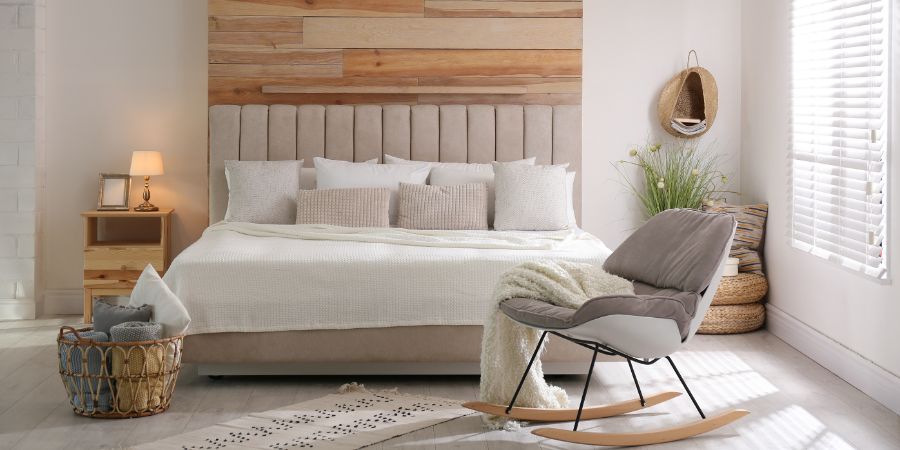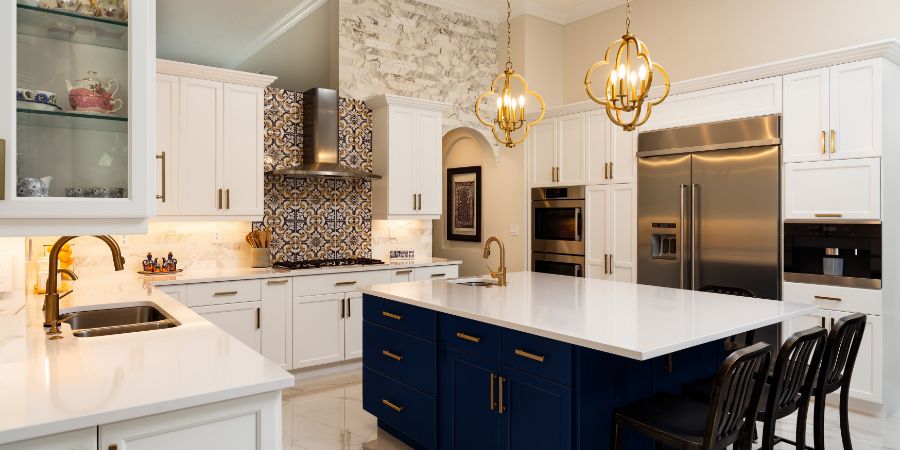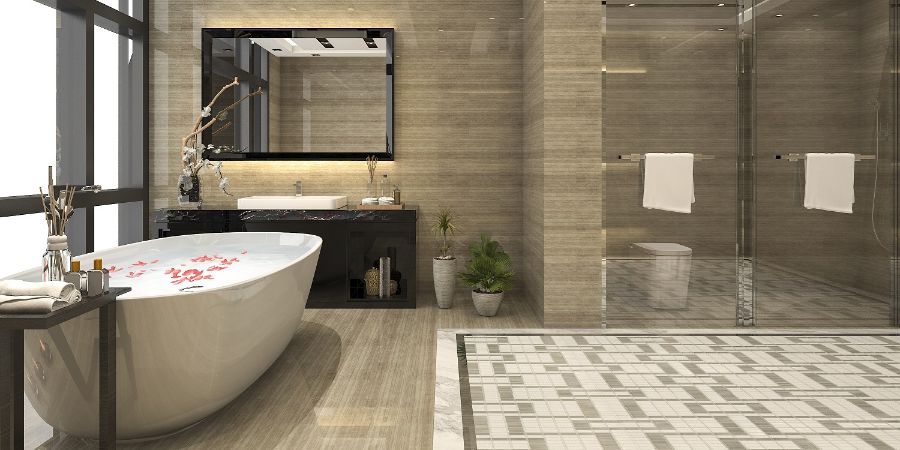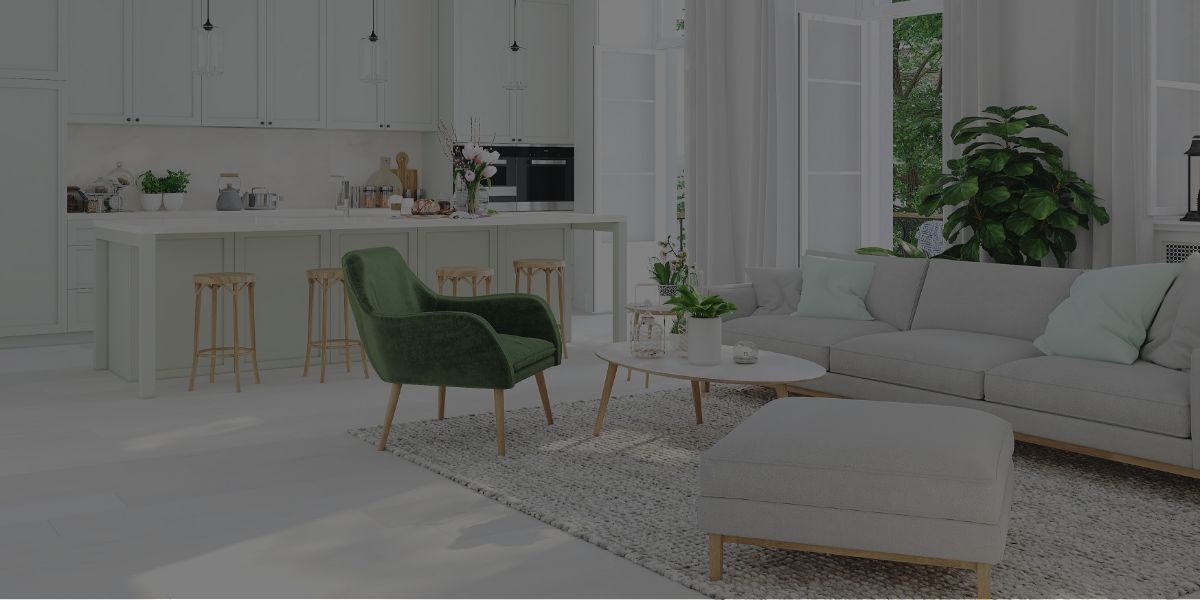As a professional home stager, it’s important to know how to charge clients for your services. After all, charging too much can scare potential clients away – while charging too little can lead to you not making a profit.
In this article, you’ll learn the basics of how to charge as a home stager, as well as how to set pricing rates that are both fair and profitable!
Pro Tip: Not yet a certified home stager, but interested in a career in this field of design? Become one in as little as 2-6 months by following these 7 simple steps!
Myth Busted: Home Staging is NOT a Minimum Wage Job!
Let’s start by first debunking a common myth: that home stagers only make minimum wage. On the contrary, home staging is a profession that – when done correctly – can be quite profitable!
The Average Home Stager Salary
- United States: Average annual salary range is between approx. $20,500 USD to $75,500 USD per year. (Source: Payscale)
- Canada: Average annual salary range is between approx. $30,000 CAD to $98,000 CAD per year. (Source: Glassdoor)
- United Kingdom: Average annual salary for a “Property Stylist” ranges between approx. £16,000 GBP to £42,000 GBP per year. (Source: Glassdoor)
- New Zealand: Average annual salary for a “Property Stylist” ranges between approx. $55,000 AUD to $65,000 AUD per year. (Source: Jora)
How Much Does a Home Stager Make An Hour?
This depends on the home stager and how they’ve priced their services. That said, on average, most home stagers charge between $25-$200 USD per hour – with some of the most esteemed professionals even charging upwards of $500 USD per hour!
Now that we know how much home stagers can potentially make, let’s move on to the next question…
How Do Home Stagers Charge?
Home stagers typically charge in one (or a combination) of the following ways:
- Per hour
- Per square footage
- Flat rate for the entire project
- Percentage of the home’s asking price

Choosing The Right Method
Which method you choose to charge will likely depend on various factors, such as:
- The size and scope of the project
- The location of the property
- Your own level of experience, expertise, and reputation
- The amount of furniture and accessories that need to be rented or purchased
For example, if you’re working on a small project in a remote location, you may opt to charge a flat rate. Alternatively, if you’re working on a large project in a high-end neighborhood, you may choose to charge by the hour or square footage.
It’s also important to keep in mind that most home stagers do not work alone – they often have a team of assistants who help with set-up, tear-down, and/or other aspects of the job. As such, it’s common for home stagers to charge a “markup” fee on top of their own hourly rate, which covers the cost of their assistants’ time.
How Much Do Home Stagers Charge For an Entire Project?
We’ve already covered what a home stager might typically charge per hour, but what about for an entire project?
As a general rule of thumb, most home stagers in the United States charge between 0.25% to 0.75% of the listing price of a home – with the average being around 0.50%.
For example: If your client’s home is listed at $250,000 USD, the average home stager would charge between $625 USD and $1875 USD for their services.
Charging by square footage is also common, with rates typically ranging from $0.50-$15 per square foot. Some home stagers may also charge a “consultation fee”, which is a separate charge for the initial walk-through and consultation (as opposed to the actual staging itself).
This fee is typically between $50-$250, depending on the location of the property and the home stager’s level of experience.
How To Charge As a Home Stager: Pricing Your Services
Now that we’ve gone over the basics of how home stagers charge, let’s talk about how to price your services.
When it comes to setting your rates, there are a few things you’ll need to take into account, such as:
- Your operating costs (e.g. business insurance, marketing expenses, etc.)
- The cost of any furniture or accessories you need to rent or purchase
- The amount of time it will take to complete the project
- Your level of experience, expertise, and reputation
- The location of the property
- The size and scope of the project
Once you’ve considered all of these factors, you’ll be in a much better position to set pricing that reflects the value of your services.
Important Things To Keep In Mind
It’s also important to keep in mind that your rates may vary depending on the type of project you’re working on. For example, you may charge a higher rate for vacant properties than occupied ones, as they typically require more work.
You should also be prepared to negotiate with clients, as it’s not uncommon for them to try and haggle on price.
If you’re ever in doubt about how to price your services, it’s always a good idea to consult with another home stager in your area. Even better, we also recommend joining a professional staging organization! The International Association of Home Staging Professionals (IAHSP), The Real Estate Staging Association (RESA), and The Canadian Association of Renovators and Home Stagers (CARAHS) are all excellent options!
Not only will this give you access to a wealth of resources and support, but it will also help you stay up-to-date on industry trends.
Did you know that as a student/grad of QC Design School, you’re automatically eligible for a membership with RESA and CARAHS? Check out all of the reputable design associations that YOU can become a member of once enrolled with QC!

How To Charge Clients For Home Staging Services: Dos and Don’ts
Now that we’ve gone over the basics of how to charge as a home stager, let’s talk about some dos and don’ts when it comes to billing clients and setting rates for client projects.
Do:
- Get everything in writing before starting work on a project. This includes a signed contract that outlines your rates, services, and payment terms.
- Keep detailed records of your time and expenses for each project. This will come in handy if you ever need to justify your rates to a client.
- Be flexible with your payment terms. Some clients may want to pay in installments, while others may want to pay upfront.
Don’t:
- Work for free or “for exposure“. Your time and services are valuable, and you should be compensated accordingly.
- Be afraid to negotiate. If a client is trying to haggle on price, be prepared to counter their offer with a fair rate that reflects the value of your services.
- Forget to send invoices. This is one of the easiest ways to get paid late (or not at all).
- Overcharge for your services. Remember, your goal is to provide value and build long-term relationships with clients, not make a quick buck.
- Undercharge for your services. This will only end up costing you money in the long run.
Setting Your Home Staging Rates For The First Time: Tips and Tricks
If you’re just starting out in the home staging business, you may be wondering how to set your rates.
Here are a few tips and tricks to help you get started:
Start by surveying other home stagers in your area to see what they charge for similar services. This will give you a good idea of the going rate in your market. It’s also important to know that, typically, newcomers in any industry are advised to charge less than their more experienced counterparts.
From There…
Once you have a general idea of what to charge, consider your unique skills and experience. If you have more experience than other home stagers in your area, you may be able to charge a higher rate.
Don’t forget to factor in the costs of running your business (e.g. advertising, insurance, etc.). After all, you’ll need to make sure your rates are high enough to cover these expenses.
And last but not least, don’t be afraid to ask for discounts! Many clients are willing to negotiate on price, especially if you’re able to offer a lower rate than your competitors.
What’s a Good Profit Margin For a Brand-New Business?
When setting your rates, you’ll also want to make sure you’re charging enough to make a profit. As a business owner, you’ll mainly be focused on two types of profits:
- Your net profit margin
- And your gross profit margin
Net Profit Margin
This is the percentage of revenue that you keep after subtracting all expenses (e.g. costs of goods sold, operating expenses, etc.). For example, if your net profit margin is 20%, that means you keep $0.20 of every dollar you make in sales.
Gross Profit Margin
This is the percentage of revenue that you keep after subtracting the cost of goods sold. For example, if your gross profit margin is 40%, that means you keep $0.40 of every dollar you make in sales.
So, What’s a Good Net or Gross Profit Margin For a Brand-New Business?
Here’s the thing: there’s no “one size fits all” answer to this question. In reality, the ideal profit margin will vary depending on your industry, business model, and other factors (such as overhead costs).
However, a good rule of thumb is to aim for a gross profit margin of 50% or higher. This will ensure that you have enough revenue to cover your expenses and make a healthy profit!

How To Charge: Vacant Vs. Occupied Properties
Another thing to keep in mind when setting your rates is the type of property you’ll be staging. Generally speaking, vacant properties are easier (and less time-consuming) to stage than occupied ones.
As a result, you may be able to charge a higher rate for vacant properties. Occupied properties, on the other hand, will usually require a bit more work (e.g. working around the homeowner’s schedule, dealing with personal belongings, etc.).
Therefore, you may want to charge a slightly lower rate for these types of properties.
Pro Tip: Learn more about the different types of properties a home stager can work with in this blog article by QC Design School alumnus, Sarah Kirkpatrick!
Get Creative By Offering Clients Home Staging Pricing Packages
Now that you know how to set your rates, let’s take a look at a few example home staging pricing packages that you can adopt for your own business:
Basic Home Staging Package: $500-$700
This package includes a consultation and up to two hours of on-site staging. It’s perfect for small homes or apartments with one or two bedrooms.
Intermediate Home Staging Package: $700-$1000
This package includes a consultation and up to four hours of on-site staging. It’s perfect for larger homes with three or four bedrooms.
Full Home Staging Package: $1000-$2000+ (or Custom Pricing)
This package includes a consultation and up to eight hours of on-site staging. It’s perfect for luxury homes or properties that need a lot of work.
As you can see, there are a variety of pricing options to choose from. And remember, these are just examples! You can (and should) get creative with your pricing packages to attract more clients.
For example, you could offer a “mini” home staging package for smaller homes or apartments. This package could include a consultation and up to one hour of on-site staging.
Or, you could offer a “deluxe” home staging package for luxury homes or properties that need a lot of work. This package could include a consultation and up to twelve hours of on-site staging.
The sky’s the limit! So, get creative and come up with pricing packages that will appeal to your target market.
Final Thoughts
As you can see, there’s a lot to consider when setting your rates as a home stager. But don’t let that discourage you! Just remember to keep these tips in mind and you’ll be well on your way to success.
Do you have any questions about how to charge as a home stager? Leave a comment below and let us know! And be sure to check out our other blog articles for more helpful tips and advice.
Thanks for reading – and happy staging!


